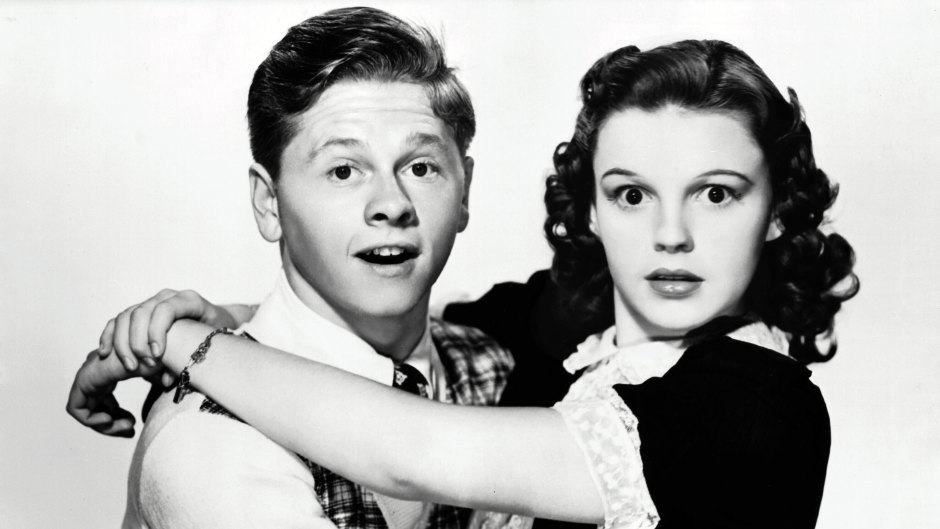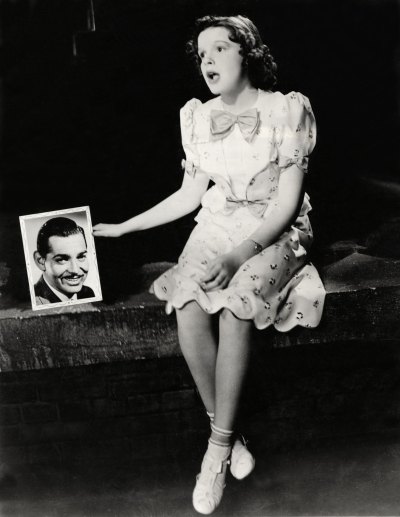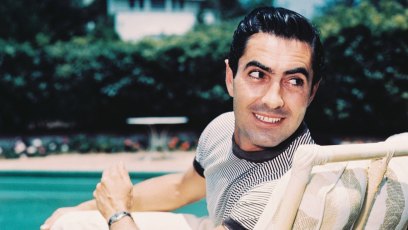
Mgm/Kobal/Shutterstock
Judy Garland and the MGM Years: How She Went from Hollywood Misfit to America’s Sweetheart
When Judy Garland signed her contract with MGM in 1935, it began a journey filled with incredible highs and debilitating lows. Though, from the onset, all America fell in love with her — first as the girl who sang a lover letter to Clark Gable; then as the girl who began a screen partnership with Mickey Rooney and, finally, as Judy herself in her turn as Dorothy Gale in the classic version of The Wizard of Oz among others. For Judy, her 15 years at MGM became an incredibly busy time that definitely took its toll — though, sadly, many around her barely noticed when it began to happen.
“During that time,” offers up John Fricke, author of numerous books about the actress, “it wasn’t just the movies. It was also making records, it was doing national radio shows, it was doing multiple war bond and army camp tours between 1941-1943. If you look at her early schedule, about a year and a half after she’d been signed at Metro, they really started to work her. One movie would be wrapping up and she’d already been in rehearsals for the next one. This overlapping went on from the late ’30s into the early ’40s. That’s when she had her first nervous breakdown, when she was 20 years old. There’s a studio memo wherein her doctor is quoted as saying, ‘Judy should not dance for six to eight weeks’; the executive dictating the memo adds that he also ‘spoke to Judy’s mother, who said she thinks Judy will be ready to dance in three weeks.’ This is the standard example of a mother who was on the payroll. The overwork continued, and by the mid-’40s, that’s when Judy showing up late to the set. But if you look at the Metro production files across those same (or earlier) years, Norma Shearer was late, Greta Garbo was late and Joan Crawford was late, so she was far from alone there.”

Judy’s introduction to the world via the big screen in the form of Broadway Melody of 1938, which was released in 1937 and featured her singing “You Made Me Love You (I Didn’t Want to Do It)” to a scrapbook of pictures of Hollywood icon Clark Gable. Suggests John, “This was important in that it was the first feature film she did at MGM. She had been there for over a year and had been getting very frustrated, because they weren’t doing anything with her. And she couldn’t even sing on stage due to her studio contract. Ultimately, her mother and Judy just decided to ask for a release from MGM, feeling she could ‘aways go back to Metro, but they’re not doing anything with me now. I’m just singing at studio parties and going to school.’ And Judy, who had been a vaudevillian and was used to doing a lot of live singing, was feeling kind of stifled. But there were a couple of reasons everybody treaded so lightly around her at Metro.”
“It’s because Louis B. Mayer [the head of MGM] really liked her,” he continues, “and Judy later later said that producers were afraid to use her in any of their films in case it didn’t come off well — and they would be blamed for it. They didn’t want to take that kind of fall. So for her first year at MGM, the studio saw to it that she was showcased on several national radio programs, because the other problem they saw with Judy is that they felt that no movie audience was going to believe that a 13-year-old girl could sing like that. That was the primary reason she went on the radio and, at first, stayed off the screen: to help audiences get acclimated to somebody named Judy Garland, who was a little girl who could really sing.”
For more on Judy Garland, please scroll down.

Snap/Shutterstock

Mgm/Kobal/Shutterstock

Snap/Shutterstock

Snap/Shutterstock

Mgm/Kobal/Shutterstock

Mgm/Kobal/Shutterstock

Moviestore/Shutterstock

Snap/Shutterstock

Mgm/Kobal/Shutterstock

Moviestore/Shutterstock

Moviestore/Shutterstock

Mgm/Kobal/Shutterstock

Mgm/Kobal/Shutterstock

Moviestore/Shutterstock

Universal History Archive/Shutterstock

Mgm/Kobal/Shutterstock

Mgm/Kobal/Shutterstock

Mgm/Kobal/Shutterstock

Mgm/Kobal/Shutterstock







































